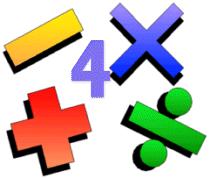Contribute
| For The Mathematically Inclined |
Anil Saigal
09/18/2013
PROBLEM #1 Please send your solutions to mr.asaigal@gmail.com. ------------------------------------------------------------------------------------------------------------- Problems from 09/12/13 PROBLEM #1 SOLUTION 1 PROBLEM #2
Use Problem Solutions M-092613 as the subject line. Please include your full name in the text of the main message. Everyone with the right answer will be acknowledged in the next issue of Lokvani.
Please do not post your solution in Post Comments. No credit will be given for solutions not sent to anil@lokvani.com.
If you need clarification on any problem, please contact anil@lokvani.com.
Find the coordinates of the point where the line through (3, - 4, - 5) and (2, - 3, 1) crosses the plane, passing through the points (2, 2, 1), (3, 0, 1) and (4,-1,0)
What is the area of the triangle ABC with vertices A (1, 2, 3), B (2, -1, 4) and C (4, 5, -1)?
You may also access this article through our web-site http://www.lokvani.com/
